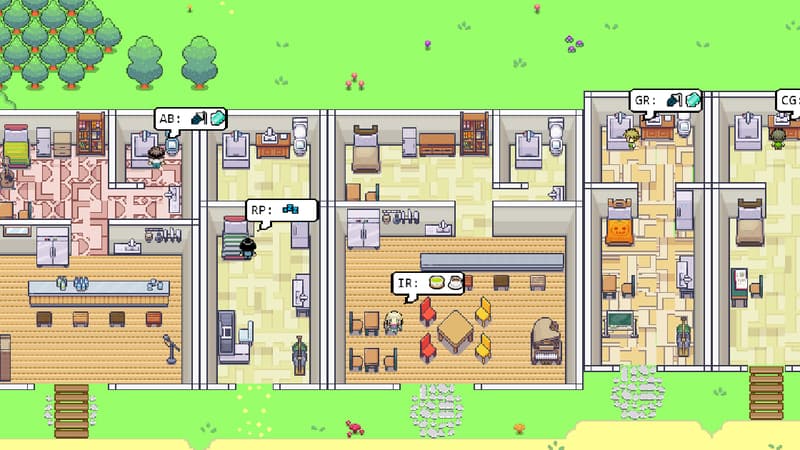It is 8 o’clock in the morning passing the Lin family. “Eddy has he gone to school yet?” her mother, Mei, asks her husband. “Yeah, he just left. He’s working on his music composition for school,” John Lin replies, remembering having that conversation a few minutes earlier with Eddy.
A scene that would be very banal, if it did not take place in a virtual village where “generative agents” evolve, generative intelligences that each adopt a role, a routine and a fictitious past, and weave relationships between them. You are in Smallville, a project made public on April 10 by researchers at Stanford University.
This experience takes place inside an interactive visualization, reminiscent of the “Sims-inspired” video game Pokémon, which can be viewed on repeat, Numerama says.
Valentine’s Night and Family Breakfast
Generative AIs like ChatGPT produce texts based on anything that can be found on the web. While most evolve in a vacuum and do not keep memories of previous conversations, some public chatbots were already able to keep a memory of their interactions and exchanges with each other. The Chai app, for example, allows you to discuss personalized conversational AIs with each other, from the vampire boyfriend to Marie Antoinette to Cartman from the cartoon South Park.
But Smallville’s twenty-five inhabitants offer a particularly realistic “interactive simulation of human social behavior.” When Latoya (one of the AIs) mentions that she is working on a photo project, Sam will remind her and check on her progress. Isabelle throws a Valentine’s party and twelve characters exchange words; only five will finally go there, the others have planned something else or simply forgotten about it. But the participants will forge privileged bonds.
To achieve these results, the researchers used an architecture that allows the agents’ experience to be recorded and synthesized in higher-level reflections: thus, if an agent observes two inhabitants sitting next to each other in the park, they will integrate the fact. that they are probably friends, and no less useful information, for example related to the color of the bench or the color of the grass. These long-term stored memories are dynamically reused to plan behaviors.
Hics and risks of “generative agents”
But this memory is not without its flaws. For example, when Tom talks about Sam’s intentions to run for mayor of the town, he remembers planning to discuss it at a Valentine’s Day event… but he doesn’t remember hearing about the night in question.
The summary of the experiment points to other risks, such as lending human behaviors to AIs of this type, or substituting human input in research, for example as study subjects of social behaviors. And the researchers note: “We suggest that generative agents should never be used as a substitute for human input in studies and design processes.”
Source: BFM TV


